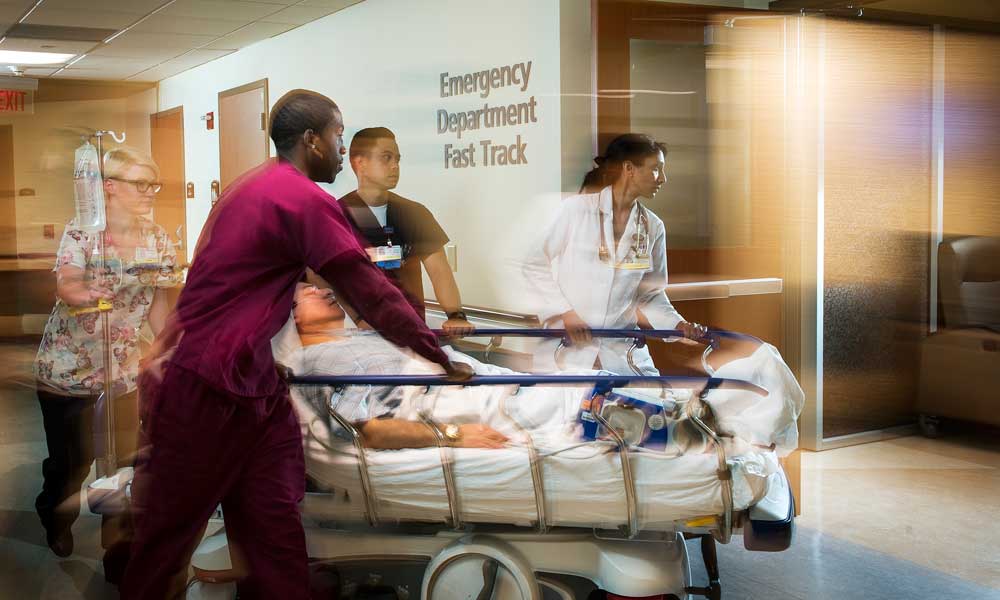Little Things Mean A Lot
Small touches make for big improvements in Saint Peter's Emergency Department.

Small devices play a big role in the high-tech care provided by the saint Peter’s University Hospital Emergency Department (ED). Take, for example, a badge-like, button-size device worn on the clothing of eD staffers. “This small item is part of a wireless communication system that enables ED personnel to be in instantaneous contact with each other,” explains Heather Veltre, R.N., nursing director of Emergency Medicine.
The system plays a key role in initiating rapid-response protocols when a patient who may be having a stroke or heart attack arrives at Saint Peter’s, a state-designated Primary Stroke Center that offers emergent clot-busting therapy to people experiencing an ischemic stroke and emergency angioplasty to patients having a heart attack.
“Patients with signs or symptoms of stroke are immediately evaluated by a provider, who then can use the device to call a ‘Code Stroke,’” explains Linda Carroll, R.N., director of Professional Practice. Merle Laud, R.N., Stroke Program coordinator, explains that when this code is initiated, “ED physicians, nurses and technicians gather around the patient to provide further assessment and care; technicians in the adjacent CT [computerized tomography] lab ‘clear the table’ for the patient; the laboratory stands ready to process blood work; and the neurology service and hospital pharmacy are prepared to respond based on the evaluation in the ED and rapidly obtained test results.”
“Time is brain, and I would put our ‘door-to-needle’ time—from a patient’s arrival at the eD to the moment when potentially lifesaving therapy is administered—up against that of any hospital,” says Carroll, noting that Saint Peter’s provides emergency treatment to more than 250 stroke patients each year and has very high scores on quality and performance measures promulgated by groups such as the American Heart Association.
Derek Schaible, M.D., interim chair of Emergency Medicine, notes that the small wireless communications devices play a crucial role in initiating other emergency codes at Saint Peter’s, such as those for laboring women facing imminent delivery, patients having heart attacks who need to be routed directly to the cardiac catheterization lab, and people who have been revived following cardiac arrest and are candidates for “Code Chill,” or induced hypothermia to preserve organ function.
“Another small piece of equipment that delivers a big benefit is our new fiber-optic intubation device, which has helped us protect the patient’s airway in situations where intubation otherwise would be difficult,” notes Dr. Schaible.
Small design enhancements also contribute to major changes in the overall environment and functionality of the newly renovated Emergency Department. Robert Mulcahy, vice president of Facilities, safety and Environment of Care at Saint Peter’s, notes that several such enhancements were incorporated into the ED’s design to create a “geriatric-friendly” space. “The ED features low-intensity lights, low-luster floors, enhanced signage and the use of handles rather than knobs,” says Mulcahy.
“All of these subtle changes were undertaken very purposefully, and in accord with recommendations from the American College of Emergency Physicians,” says Dr. Schaible. While the design enhancements are beneficial to all patients, he says, they are particularly important for older men and women who may have visual impairments, problems with arthritis and other conditions.
Veltre adds that other geriatric-friendly but universally welcome enhancements include all-new stretchers with extra-thick mattresses, a blanket warmer, fluid warmers and other upgrades intended to increase patient comfort. —T.G.


